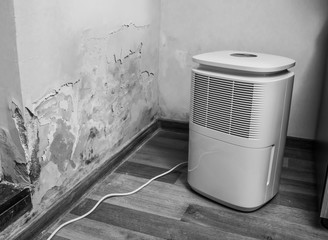There are several types of dehumidifiers available. You can choose from Arxell, Condair, and Refrigerant dehumidifiers. Each has its own benefits and drawbacks. If you’re not sure which one to buy, read on to learn more about them and what they can do for your home.
Arxell Drying and dehumidifying products are designed to remove excess moisture in your home or office. Their innovative technology creates a micro-climate between wet surfaces and their drying units, ensuring that they remove moisture from surfaces while evenly distributing air across the surface. This method prevents patches of moisture from appearing on surfaces.
Condair offers a full line of dehumidifiers and dryers. Their DC condensing range offers a wide range of drying capacities and cooling outputs, from a mere 263 liters per day to up to 940 liters per day at 30degC. The range also includes stylish and sleek in-room units.
Condair has a strong focus on efficiency and durability. This is reflected in their stainless steel, powder-coated housing. Their dehumidifiers are easy to maintain and can be disassembled easily. They also feature a remote controller, which provides fast and easy access to internal components. Condair DC dehumidifiers are also equipped with ducted ventilation systems, which allow them to directly deliver dry air into the room atmosphere. Some models are also equipped with more powerful fans, which allow them to be installed in larger duct networks.
Condair dry-air systems provide a range of benefits to the environment, health, and productivity of many commercial and industrial environments. They are particularly useful for applications where the relative humidity is low, such as in warehouses and food manufacturing facilities. In addition, these systems can even operate at a low temperature of -22 degrees Fahrenheit.
Convective drying is a process that utilizes a heat-carrier flow to evaporate water. This process is effective at reducing energy costs, but it also requires long drying times. It is also reliant on ambient air conditions and weather. Moreover, high humidity levels can prevent complete drying.
This method is effective for dehumidifying and drying all kinds of plastics. The main difference between convective drying and natural drying is the amount of heat transferred into the material. Natural drying takes the longest time, and it can also be affected by ambient conditions. Insufficient air circulation can encourage the formation of mold and fungal growth. Another advantage of convective drying is that it uses heat and the heating system of the building to speed up the drying process.
Moreover, the convective drying process eliminates the potential for mold proliferation. It also expels airborne particulates, odors, and mold spores to the outside. As a result, it reduces the need to strip structural components, reduces secondary damage, and saves energy and money.
Another advantage of convective drying is that it works effectively in all temperatures. A 10deg C increase in temperature doubles the evaporation process. This means that it can drastically reduce the relative humidity of a building. Using dehumidified air to dry an object can reduce its RH to just 5%.
The drying process has three phases. The first phase, called the sensible heat transfer phase, occurs very quickly. The second phase, known as the constant rate phase, occurs slowly. The remaining water on the surface of the material remains on the product surface for a long time, so the drying rate is high during this phase.
Refrigerator dehumidifiers can be a helpful appliance when dealing with excess moisture in your home. It can keep your home dry and prevent mold growth. Mold exposure is a potential health hazard and can cause allergic reactions and other respiratory problems. It is important to choose the right appliance to help prevent mold growth in your home.
The most effective refrigerator dehumidifiers use Low Grain Refrigerants (LGR), which are energy-efficient. They typically feature an air pre-cooling device, which sends cooler air into the dehumidifier’s cold coil. They also use a looped system to collect heat and re-circulate it, giving the unit excellent energy efficiency. Some refrigerator dehumidifiers even have high-temperature models that remove water in air temperatures as high as 120 degrees.
The dehumidifier’s main feature is its ability to remove moisture from the air. The process works through the absorption and condensation of water from the air. A drip tray collects the water in the dehumidifier’s water tank. A fan then propels the dry air out.
The cooling process in a refrigeration dehumidifier uses cold and hot coils to remove moisture from the air. These coils must pass air through a cooled surface, and when the float reaches a certain level, it trips an electrical switch and turns on the indicator light. However, not all dehumidifiers use this refrigeration method. Some use mopping to remove moisture from the air.
The desiccant of the refrigerator dehumidifier is made from silica gel, which is the same material that absorbs moisture. This material is cooled below the dew point to drive off moisture. After being cooled, the desiccant is recharged and moved to another location. The desiccant can be mounted on a belt or moved through other means throughout its cycle of operation. Refrigerator dehumidifiers can be particularly effective in areas that are subject to high humidity at low temperatures.
